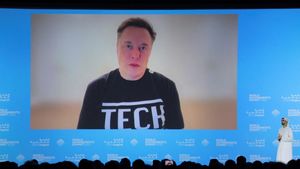The anticipation of market trends for 2025 has become increasingly important across various sectors, offering businesses insights to optimize their strategies and product offerings. Among the industries leading this charge are footwear, wine, renewable energy, and digital user experiences. This article delves deep, providing insights and predictions from key players within these sectors.
Starting with the footwear industry, the MICAM exhibition, the leading international footwear fair, has introduced the first Buyer’s Guide for the FW25 season. This groundbreaking guide, developed through a collaboration with Livetrend, utilizes artificial intelligence to provide precise market forecasts. The guide aims to assist buyers by identifying the most promising footwear trends for the autumn/winter 2025 season. Through the analysis of millions of online images and data, Livetrend has highlighted key trends based on factors such as online search volume, catwalk appearances, Instagram interest, and global sales.
The Buyer’s Guide categorizes trends under three main sections: Manifest, Invest, and Test, encompassing everything from established and visible trends to promising yet volatile trends. For example, the 'Utopian Utility' trend blends functional minimalism with romantic aesthetics, signaling a soft yet sophisticated future. Searches for ‘gorpcore’ have surged by 300%, showcasing rising consumer interest.
MOVING TO the wine segment, the Italian market indicates signs of stagnation, particularly within the retail and e-commerce segments. According to Nomisma Wine Monitor, even as challenges mount domestically, the international market shines with Italian wines experiencing export growth exceeding 4% for 2024, totaling more than €8 billion. Exports to the U.S., the most strategic market for Italian wine, have increased by 8%, indicative of shifting consumer preferences focusing on sustainable and low-alcohol options. This polarization reflects the broader marketplace where mid-range wines are struggling, yet high-end wines are thriving, demonstrating the trend of premiumization.
Huawei Digital Power, specializing in integrating digital technologies and power electronics, has also set the stage for 2025 by outlining the top ten trends in the photovoltaic sector captured under its brand FusionSolar. Presenting these trends, Steven Zhou highlighted the continuous growth anticipated for photovoltaic and energy storage systems, underlining innovations impacting energy access and stability. Key trends include the increasing autonomy of renewable energy installations and the importance of high-density power semiconductors, which could improve system efficiencies significantly.
Lastly, we cannot overlook the digital sphere where user experience (UX) takes center stage. Eye Studios, recognized for its design excellence, predicts dramatic changes for 2025, focusing on user-centric digital experiences. CEO Daniele Lunassi emphasized the increased necessity for seamless usability and inclusivity, driven by the upcoming European Accessibility Act. Companies must now prioritize strategic design to create smoother customer journeys, with AI-driven solutions and voice interactions poised to revolutionize the user interface.
Through these insights, businesses are urged to prepare for the challenges and possibilities of 2025. While instability persists across various markets, the proactive identification of trends can offer companies the necessary tools to improve customer engagement and operational efficiency. The year 2025 promises to not only reshape markets but to also redefine how consumers interact with brands across all sectors.



